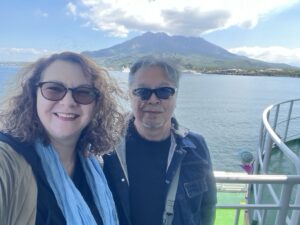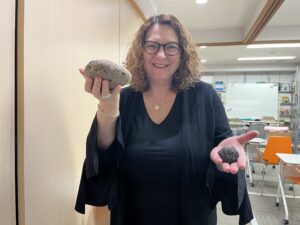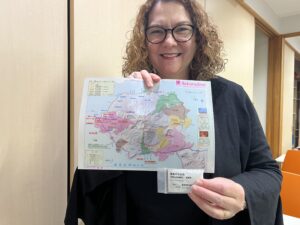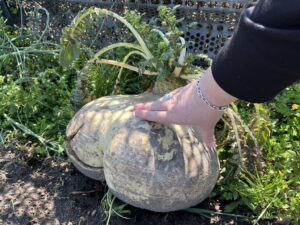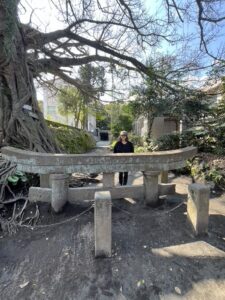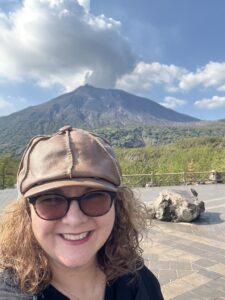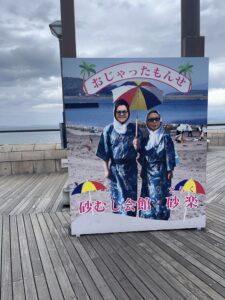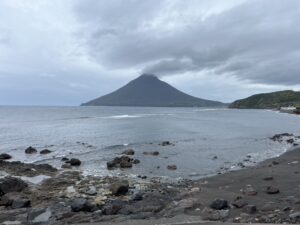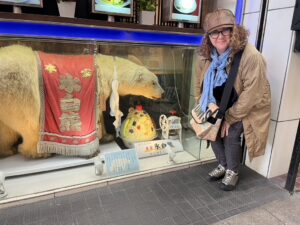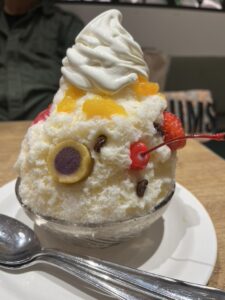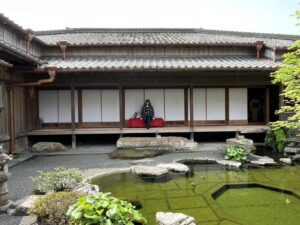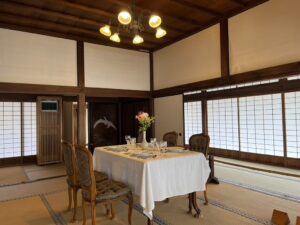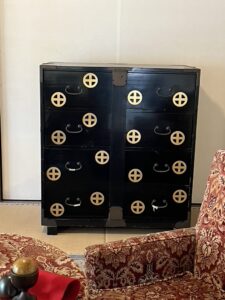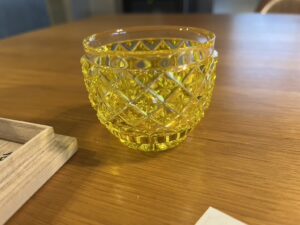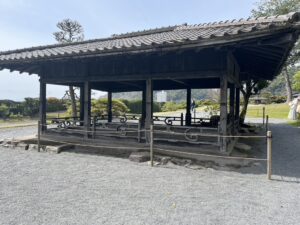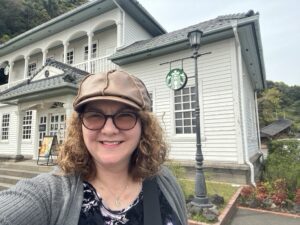Mr. Ito and I took a quick trip to Kagoshima at the end of March, before the beginning of the new school year. It was Mr. Ito's first time to go. I had been twice before to make teaching presentations, but never had time to sightsee.
Our first day we visited Sakurajima, something I had only seen from a hotel room window previously. The day we arrived was beautiful, so we put our rental car on the ferry and went on over.
There were a lot of educational exhibits about Sakurajima. I was amazed at the difference in weight between different volcanic rocks and bought some for BIG BOW lessons. I also bought volcanic ash from Sakurajima and a file that shows the topography of the volcano.
Why would people want to live so close to an active volcano? The volcanic ash makes the soil so rich, they can grow radishes so large they got in the Guinness Book of World Records!
When the volcano erupted in the Taisho era, it buried the gate in this shrine. They only excavated 1/3 of it so we can be reminded of that terrible tragedy.
Sakurajima erupted 89 times last year and decided to erupt again the last hour we were there!
The next day we went to Ibusuki to try the famous sunadaburo, or sand bath. You put on a yukata and they bury you in hot, volcanic sand. It felt really good, but we were so surprised at how heavy the sand was.
We also drove to Cape Nagasakibana, which many say is the birthplace of the Urashimataro story. We had a beautiful view of Mt. Kaimon.
Of course, Kagoshima is famous for kurobuta, black pork, but it is also famous for shirokuma shaved ice. It was really good, but very large! This is the "baby size"!
Our last day, we visited historical Senganen garden and the house built by the Shimadzu family.
I love the design of the Shimadzu's family crest. They put the crest on everything from lampshades to chests.
The family realized at the end of the 19th century that they had to engage in diplomacy with other countries to keep themselves safe. This outdoor pavilion played a role in that. Also, they developed their own method of producing cut glass to provide goblets for foreign guests at banquets. The glass factory was destroyed during the Satsuma Rebellion and the secret of making the glass was lost for 100 years. In 1985, a company studied the techniques and started producing it again.
The glass is very beautiful! There were many European tourists at the Sengan garden gift shop buying it.
Our last stop was a Starbucks in a renovated historical building next to Sengan garden.
I can't wait to visit Kagoshima again!


